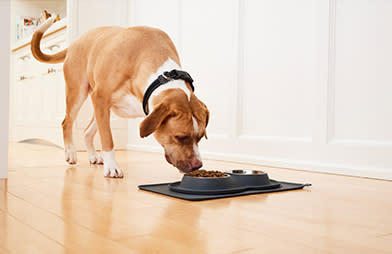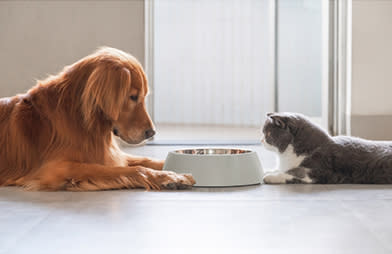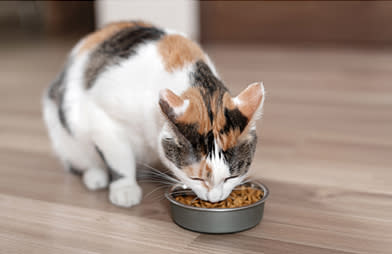You might know how to make lasagna from scratch, or perhaps you're an expert when it comes to baking a pie. Maybe you’re a fan of watching home cooks or professional chefs compete to create a perfect opera cake, or gyoza dumpling.
But do you know how dog and cat food is made?
What’s in kibble? How is freeze-dried raw food prepared? How do you can wet food?
Most importantly: What steps are taken to make sure that these various food sources are healthy and meet the nutritional needs of our furry BFFs?
When working on the Performatrin line, Hogan helped develop four key diet philosophy categories: Scientific, Holistic, Natural, and Culinary.
They’re all different in order to serve varied specific needs.
“Performatrin Prime is our scientific category,” she explains. “The idea behind scientific feeding is focusing on nutrients rather than ingredients. You want to achieve a targeted level of protein, calcium, phosphorus, and things like that. A lot of people have since combined that way of thinking with more holistic ideologies, but at its core that's what scientific feeding is.”
Performatrin Ultra is the line’s holistic formula where you see ingredients that you’re familiar with such as chicken, or apples. “They are ingredients that a pet parent can connect with, and the focus is on ingredients that are minimally processed,” Hogan says.
With the holistic formula, you can still pay attention to nutrient levels, but it’s more about the ingredients, she says.
With the brand’s Naturals line of pet food, the two previous ideologies meet to create the most cost-effective diet with high nutritional value.
“It’s still our holistic way of feeding,” says Hogan, “but we try to incorporate the ideas from a scientific way that would make it a little bit more cost-effective. When you formulate scientifically, you end up getting the best cost per feeding and your best nutritional value.”
Finally, the brand offers a Culinary diet. Hogan describes it as “a step above holistic.” This is minimally processed, organic, humane focused ingredients in a freeze-dried, raw format.
“I'll tell them, ‘I really think we need to add more of this nutrient. How can we do that?’ And then they'll come back to me and say, ‘Well, if you're looking to add Omega fatty acids because you're wanting to improve skin and coat, we have fish oil, we have marine microbiology, we have flaxseed oil.’ All of those options help me to build what I'm trying to achieve.”
The actual pet food production process
For dry foods, Performatrin kibble is made by a process called extrusion, says Hogan.
After all the dry and wet ingredients are mixed, the resulting dough goes into a machine that cooks it at a very high temperature and pressure, then gets pushed into a second machine that cuts the kibble shapes. Next it is dried, cooled, and coated with extra vitamins and minerals plus a palatant (which improves taste, texture and aroma) to make it even more delicious.
“There are combinations of palatants we can use to make really unique flavours,” she says.
Palatants are a crucial element of kibble, and are always all-natural, made from single meat proteins like chicken or lamb, or vegetable based, Hogan explains. “They help to make kibble taste good, because it can be the healthiest kibble on the planet but if your pet won't eat it, then you have a problem.”
Performatrin's palatants are also all grain free, corn free, soy free, wheat free, and gluten free.
For wet food, the process is similar but instead of drying the food, it goes through a mild cooking process before it's put into cans, Hogan explains.
Raw foods can be purchased frozen or freeze-dried, and both offer a higher safety factor for families concerned about bacteria being spread from raw food.
Hogan notes that frozen raw food in particular has a higher requirement for at-home safety measures that must be followed (they are outlined via provided instructions). Meanwhile with freeze-dried raw, Hogan says all bad bacteria and pathogens are removed by FDA-approved processes such as steam sterilization or irradiation
Safety always comes first
No matter what kind of food is being made, Hogan says that pet food productions like Performatrin all go through several stages of safety and quality testing.
First, the ingredients are tested when they arrive at the manufacturer. After the food has been made, it’s tested again to ensure it meets pre-determined nutritional standards.
“If we happen to make a batch of food and protein levels are supposed to be at 25 and it's coming in at 22,” says Hogan, “then we're not going to sell it. We're going to pull it and start from scratch.”












































